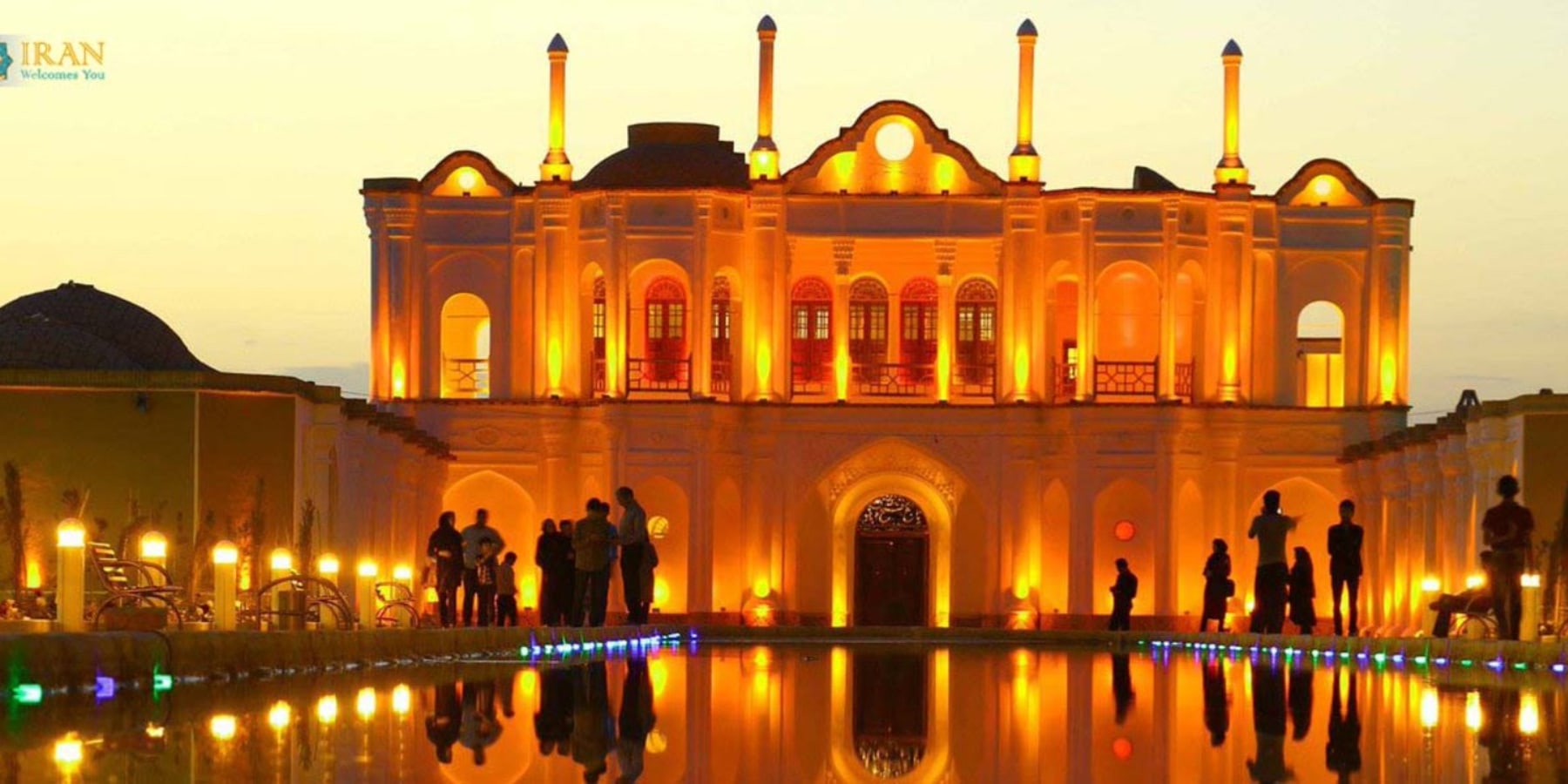
History of Fath Abad Garden
Fath Abad garden is known as the Biglary Garden in Persian. It was the nickname of its owner, who was also the governor of Kerman in Qajar dynasty. Construction of splendour Fath Abad Garden had taken 5 years to finish; all evidence proves that this Persian garden was used as a recreational garden in Iran. Although this garden isn’t registered as a part of the Persian Gardens on the UNESCO World Heritage Sites, it’s still definitely worth visiting. Fath Abad Garden covers more than 13 hectares area, full of long lines of plane trees which make this Persian garden more interesting.
Inside, there is the pleasant mansion known as Biglary mansion constructed in 2 floors ornamented with adorable portals. As you enter the garden, an eye-catching green area with a totally white mansion having a blue pool in its frontier shows its beauties to you. There also are 4 tall minarets on top of the mansion which add to its awe.
One Room of the garden is embellished with exquisite paintings. You will be inspired by its valuable & breathtaking paintings all over the room. Another mastery art inside this Persian garden is stucco works which are showing at the entrances of building with magnificent calligraphy stucco illustrates the name of God.
Another significant point belongs to the garden is the very old berry tree is inside the mansion. During the construction, there was this old tree in the middle of the area.
Instead of cutting this old berry tree, architect preferred to manage the building process without cut it and maintain this lovely tree.
This garden has undergone reconstruction a century after construction and the beautiful paintings were painted again by the skillful artist on the walls. At the time that Ghanat of this garden dried, trees and flowers turned dry and the garden lots its glory it was the start time of being ruined until the renovation process just started. Today this Persian Garden is one of the most attractive Kerman's attractions. It is said that the layout of this garden is inspired by Mahan Garden of Kerman.

